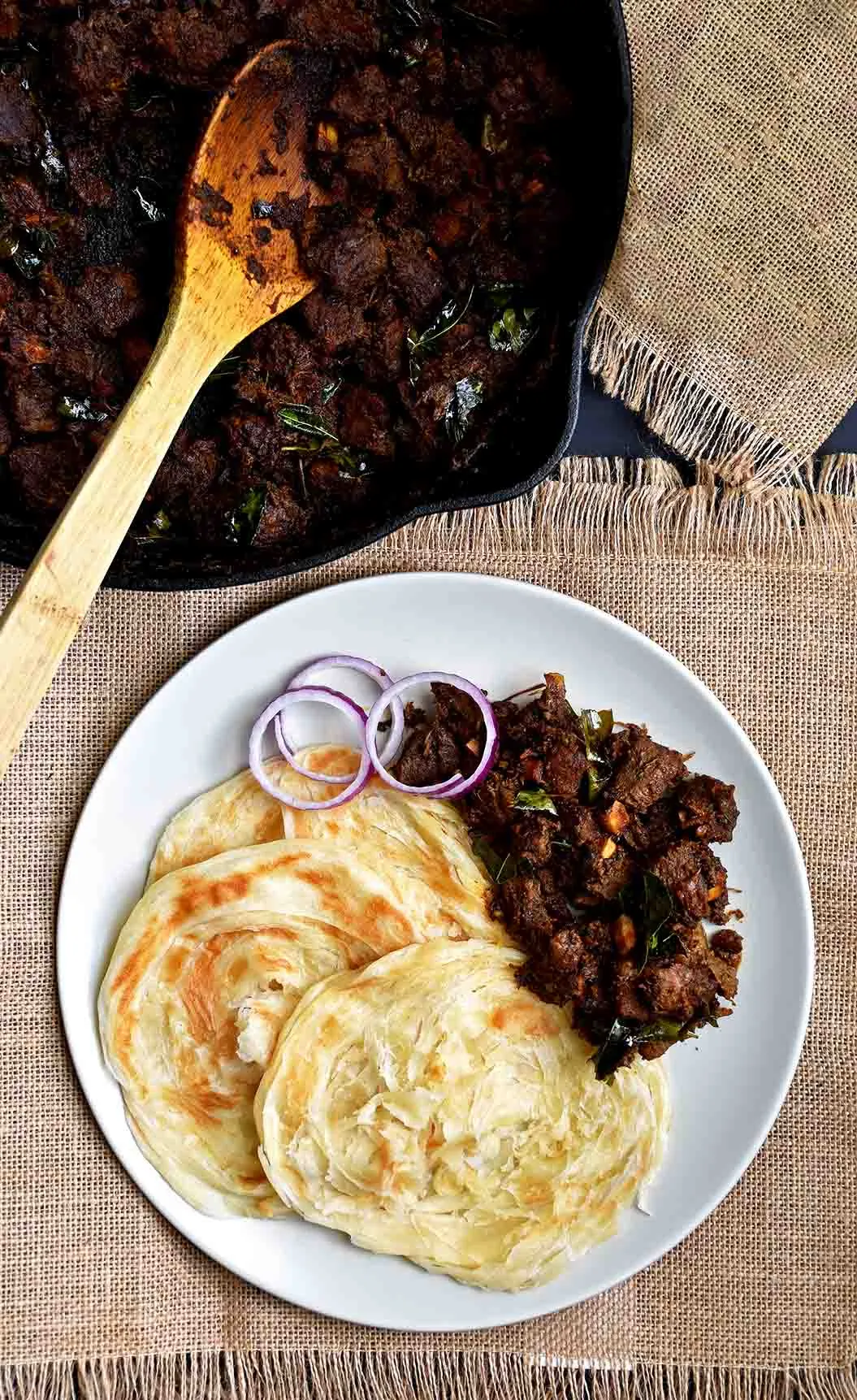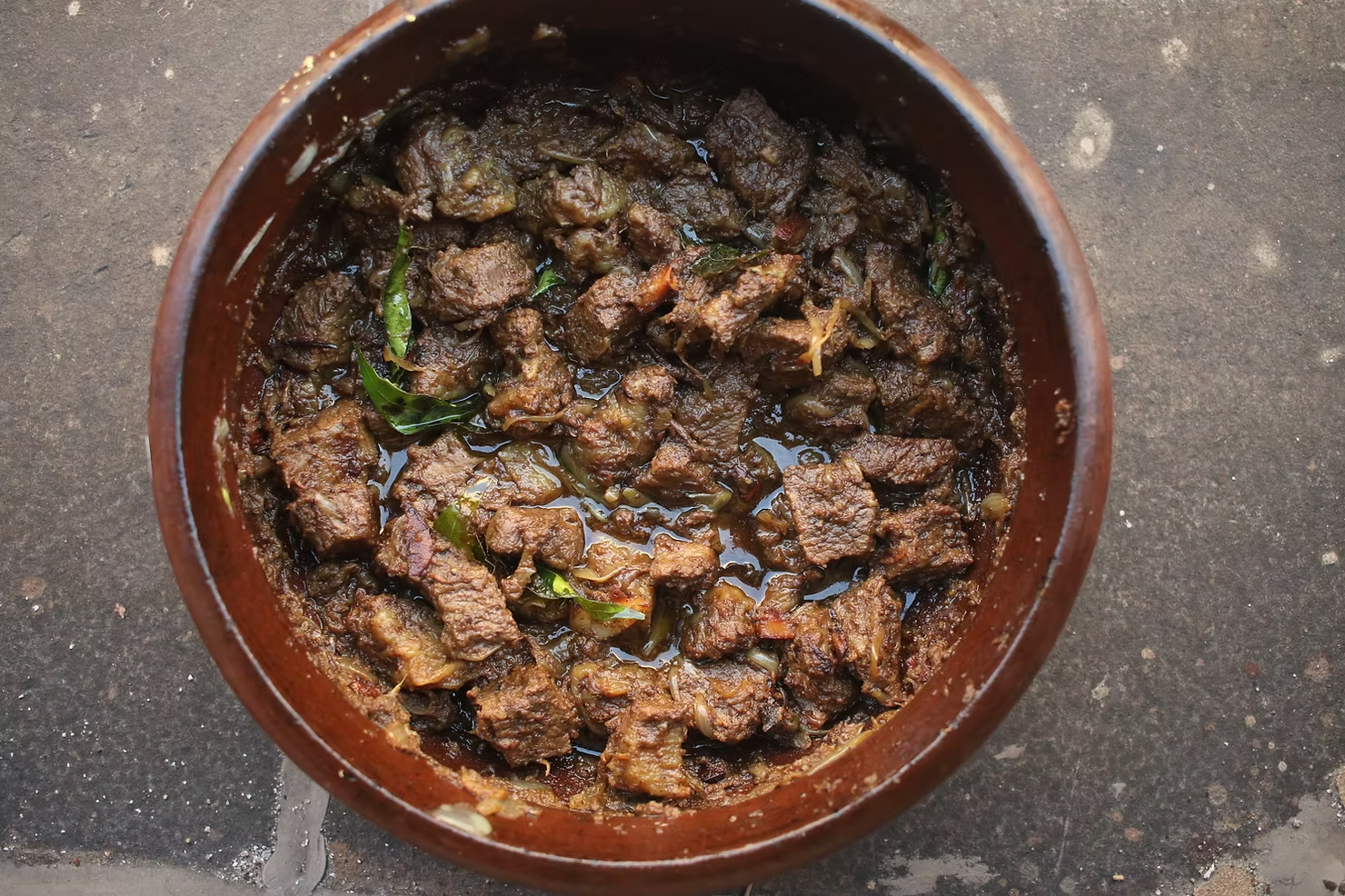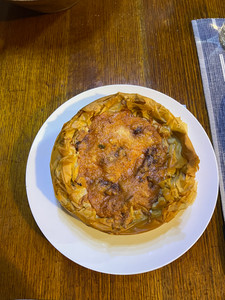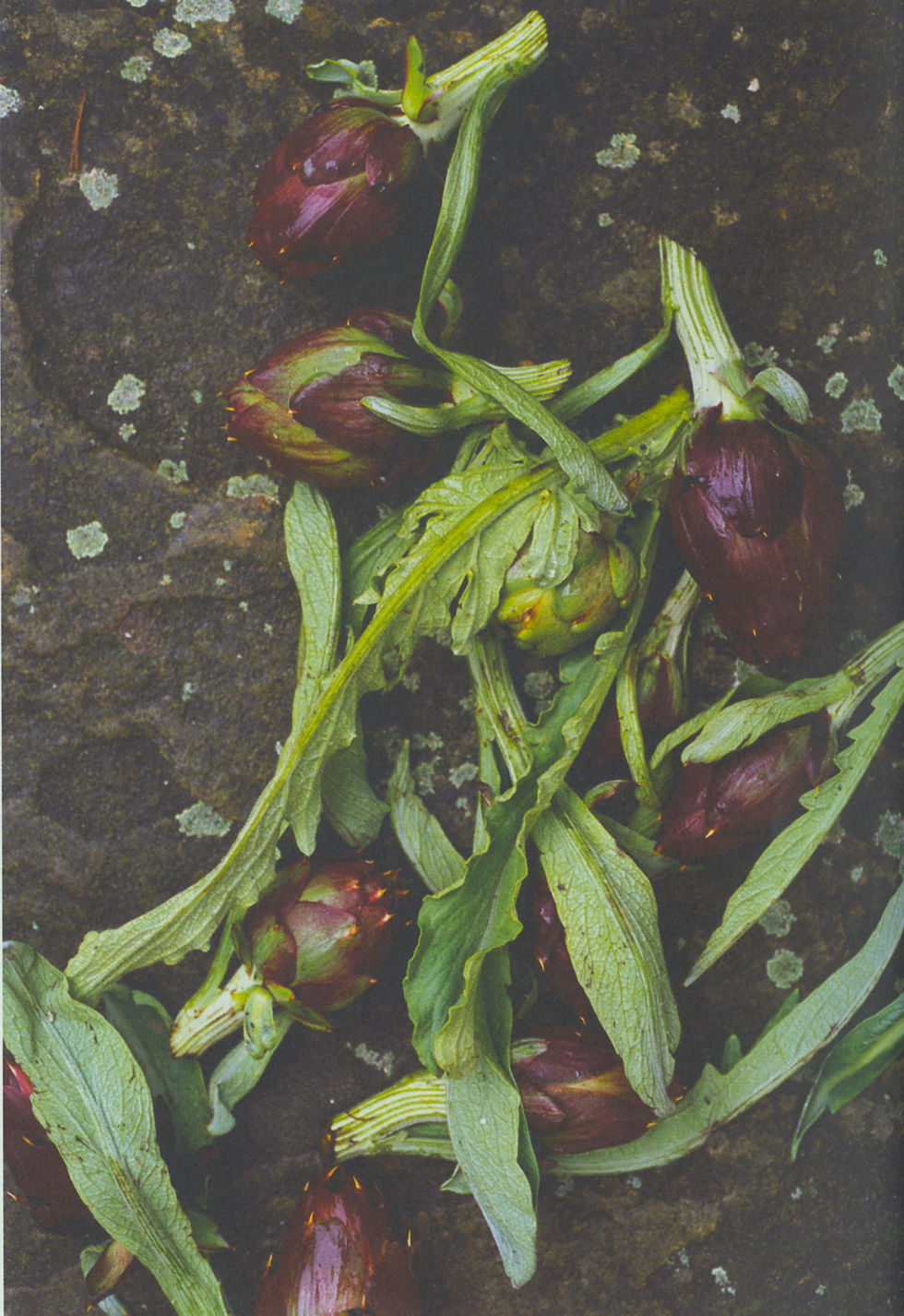Fusion or confusion? - two dinners
- rosemary
- Jul 27
- 8 min read
"a twisted kind of sense" Jay Rayner

This is last night's dinner - simply called Fried beef kerala from my other The Food of ... series books - this one being India. And I will look at the book as a book another time.
This is not a literal photograph of last night's dinner. I, of course, forgot to take one, and anyway it would not have looked anywhere near as classy, although, that said, I have to say that my dish didn't actually look that different - but the photo would not have been nearly as good.
Mind you, there were no big chunks of potato - I cut them smaller - well the recipe didn't tell me how big to cut them - it just said 'small cubes'. And mine were. They were so small in fact that David didn't know they were there. My slices of beef were also smaller, because I had inadvertently cut my meat into chunks, then realised the recipe said thin slices, and so I went back and cut my chunks into slices. Slices made sense because you only fried them briefly.
As always - well often - I didn't really look at the recipe carefully. I had just decided on beef and subsequently a curry, and since The Food of India was sitting on my desk waiting for its moment on the internet, I decided to pick something from there. And there were not a lot of recipes for beef - of course. Cows are sacred in India and in 20 out of the 28 states, the slaughtering, sale and eating of cows is banned. However:
"Beef is very important for Kerala. There can be a Hindu, Muslim and Christian sitting at one table and they'd bond over a plate of beef fry and paratha despite any differences of caste and class," BBC

Indeed it is a political issue, as the current central government is very Hindu and very authoritarian. 55% of the population in Kerala is Hindu, and so there is some anxiety amongst the Keralan beef fry fans - the majority Malayali population. If I was doing one of my round the world posts on Kerala I'm guessing that it would turn out to be the national dish - mostly cooked in tiny shops and served with the local flat bread.
I see I have come to the dish itself - and why I now see that the dish that I ate last night is not really the 'national dish' version, but then every national dish is cooked differently by every cook who makes it.
Ignoring last night's version - which I shall come to - it now seems to me that there are two basic versions of this dish. In the first the beef is marinaded in a meat masala of toasted spices, which include fennel, cardamom, cloves and cinnamon plus curry leaves, onions, garlic, chilli ... I'm sure everyone has their own mix. The beef is then slow roasted - and here is an interesting thing - well for me anyway. This roasting is done in a pressure cooker, which is a western invention.

I don't have one, and Christine Manfield, who may not have one either steams her Twice-cooked masala beef on the CKBK website or Dry-fried beef and coconut as she calls it in her book Christine Manfield's Cooking Class.
Notably neither she nor my The Food of India recipe writers, Priya Wickramasinghe and Carol Selva Rajah have given their recipes an Indian name. And those Indian names are confusing too - Ularthiyathu; Thenga kothu irachi, ulathiya irachi ... I did find that irachi or erachi, simply means meat, thenga means coconut, and kothu means chopped, so maybe the ular bit means fried. The meat, can also mean buffalo meat it turns out, and of course you will find versions made with chicken, pork, lamb or goat.
But yes the coconut seems to be a constant - actual slices of actual coconut which are sometime roasted with the beef, and sometimes just fried at the end, sometimes both.
Back to the two different methods however - the one which uses the pressure cooker, finishes the dish by frying the cooked beef mixture with the coconut, curry leaves and onions until the mixture is dry.
And I have to say that this method seems to be the most constant one, although I also found these words in a BBC article:
"To make authentic beef fry or "Thanga Kotthu Irachi", the meat has to be stir fried along with coconut flakes on a slow flame for half a day." BBC
Maybe that's just another way of slow roasting the beef.
There are quite a few recipes on the net which vary slightly from each other - well of course they do. I have chosen three representatives - all from Indian cooks - well they are probably Amercan or British or some such, but they all had Indian names and looked Indian, so I think they are either properly authentic, or at least have learnt the recipe from a grandmother or mother. Kerala Beef Ularthiyathu (Beef Fry) from The Familiar Kitchen; Beef Ularlthiyathu (Beef dry roast) - Pepper Delight and Erachi Ularthiyathu/Kerala beef fry - Tiffin, whose author admits to his being not as dry as tradition dictates.
Those breads in the second picture are the Keralan version of paratha - porotta - possibly my favourite kind of Indian bread.
Back to last night's dinner however. As I said, I had not read the recipe that carefully, I just thought it looked great, and I had beef and I fancied curry. It's in a book about the food of India, so it will be spicy won't it? Well yes and no. And how did it differ from the albeit slightly different versions of the traditional Fried beef kerala? Well there are actually so many differences that I have no idea how it can be described as Fried beef kerala all.
No coconut, no curry leaves - which I forgot to mention, but which seem to be vital to this dish. No meat masala - no spices at all in fact, except for chilli. The meat was marinaded briefly but only with pepper, garlic and ginger - I'm afraid I used minced ginger from a jar, rather than either real ginger or ginger juice that the author asked me to use.
The potatoes - even though Indians love potatoes, they are not a feature of this particular dish. Maybe the author thought they would be a good substitute for actual coconut slices - which are indeed difficult to get. The potatoes were first deep fried until golden, and left aside on paper towels. The same thing happened to the sliced beef - in batches, and two sliced onions fried until golden.
And here comes the very untraditional bit. Having removed all of the above from the oil, and also having removed all that oil, to be replaced by a couple of tablespoons of new oil - into this oil you stir tomato paste, soy sauce, chilli powder, lemon juice and beef stock (in my case a crumbled Oxo cube and some water because I had no beef stock), cook for three minutes, add a chopped tomato and some frozen peas. cook for 1 minute, finally adding back the potatoes, onions and beef and heating until all mixed and hot. I scattered some parsley (it should have been coriander but I had none) on top - and voilà dinner - served with rice.
A weird mixture don't you think, and bearing hardly any resemblance to the Keralan dish? Does it matter? And what did it taste like?
Taste first. I have to say I was nervous, because of that weird mixture of ingredients in the sauce if you can call it that - tomato paste and lemon juice from the Mediterranean, soy sauce from China, beef stock from - well England, France ..., peas, tomatoes and potatoes - which I suppose the Indians do combine often, but still ... But you know it had an undeniably pleasing taste. It might not top my list of all time great dishes, but it was pretty quick to cook - the onions took the longest to cook, and also pretty simple, so yes I might make it again some day. Maybe when I have some leftover cooked potatoes.
I don't know whether the author of this recipe set out to create a fusion dish, but fusion it certainly is.
"Fusion food as a concept is kind of trying to quite consciously fuse things that are sometimes quite contradictory, sometimes quite far apart, to see if they'd work." Yotam Ottolenghi
And he would know, and of course, there must be failures along the way, but failures won't make it into a cookbook surely?

I said two dinners, so a very brief comment on my other dinner - Nigel Slater's Sauerkraut fontina and walnut galette which we ate for dinner on Friday, and which tends to follow this approach to fusion food, by Peter Gordon, a celebrated New Zealand chef known for his fusion food:
"I tend to think of food as a series of ingredients rather than something historical."
Nigel's galette was indeed not based on an 'classical' dish, but merely used a technique and a set of ingredients, which he presumably had to hand:
"This sort of pie is extremely good with onions you have cooked until deeply bronze and soft enough to crush between finger and thumb. Add ribbons of sauerkraut to balance their sweetness and you are in business. Layer them with a good grating of sharp cheese and a handful of chopped nuts and you have a pie to remember."
I too began with ingredients - leftover sauerkraut and some filo pastry on the verge of going off. For I strayed even further fusion-wise, than Nigel with the filo pastry - an Eastern Mediterranean thing. I suppose onions are often combined with sauerkraut and also with cheese but possibly all three are not often seen together. My cheese was just tasty - you can't get fontina here in Eltham. Plus pastry - this tart is a step further from the onions and cheese combination that I wrote about some time ago in my post Elizabeth vs Nigel - onions, pastry, cheese. Cheese and onions - lots of each with the sauerkraut adding a welcome tartness to the mix. It was yummy - and this time I remembered to take photographs. Possibly not good for you though.
Fusion food is an ancient thing. Tonight we are going to my son's house to eat spaghetti and meatballs - an apparently Italian American dish - I don't think the Italians mix meatballs with pasta very much - not in a sauce and all tossed together anyway. Tomatoes were once a fusion thing because the Italians didn't know about tomatoes until their discovery centuries ago. And I wonder who thought it was a good idea to mix meatballs, tomato sauce and pasta together.
Look at the food on your plate next time you eat and wonder what kind of fusion - besides the magical fusion - well transformation really - of the raw into cooked - is happening in front of you.
YEARS GONE BY
July 27
2023 - Coconut rice - so many ways
2020 - Missing
2019 - Parathas - particularly the stuffed kind - a small coincidence
2018 - So much seafood
2017 - Is gluten-free healthy?
2016 - Fibre and the human biome











Both dishes were enjoyed on two separate nights, but I think I preferred the beef - non traditional curry that was not curry like at all, and so consequentally went very well with the white Sauvignon Blac from WA. As an aside curry and wine do not go together very well. The Sauerkraut pastry dish was lovely,. The filo pastry was superb. Some leftovers still there in the fridge waiting to be enjoyed! 😜